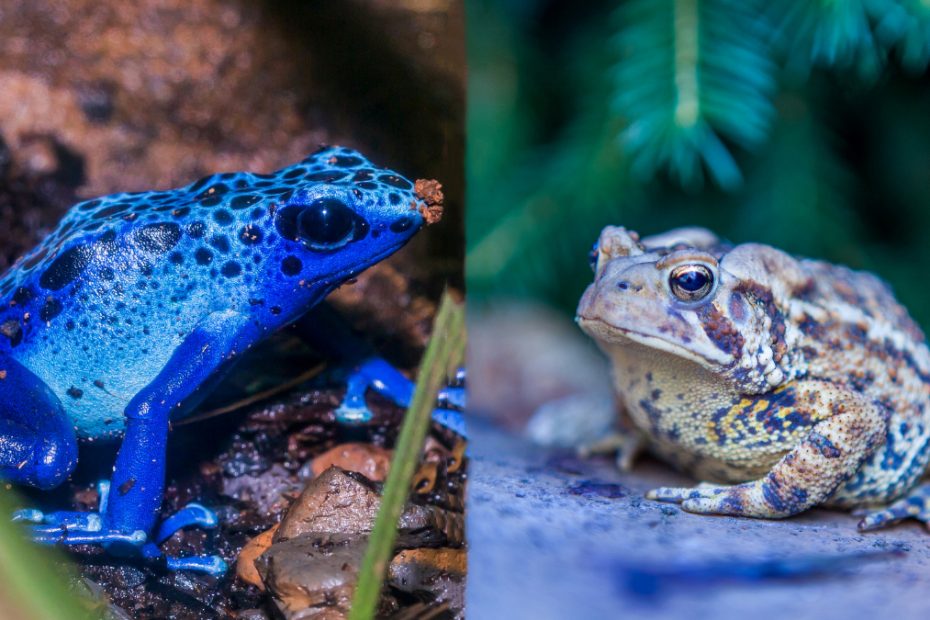Amphibians, including frogs and toads, are a diverse group of animals found in different ecosystems worldwide. Their ability to regulate their body temperature is essential for their survival, as it determines their metabolic processes and energy requirements.
So, people frequently wonder whether frogs and toads are cold-blooded or warm-blooded. Frogs and toads are cold-blooded animals that cannot generate internal heat. They require external heat sources to manage their body temperature. They tend to bask in the sunlight to regulate their body temperature.
In this article, we will discuss whether frogs and toads belong to cold-blooded or warm-blooded animals. Additionally, we will cover the features and behaviors that help them survive in various habitats and deal with fluctuating weather conditions. So, let’s get started!
Are Frogs And Toads Cold-Blooded or Warm-Blooded In Nature?
Frogs and toads are typically cold-blooded animals, also known as ectothermic creatures. They are unable to control their body temperature internally and rely on external sources of heat to regulate their temperature.
According to the American Museum of Natural History, some frogs dig burrows when temperatures decrease. In contrast, wood frogs can survive in extremely cold environments.
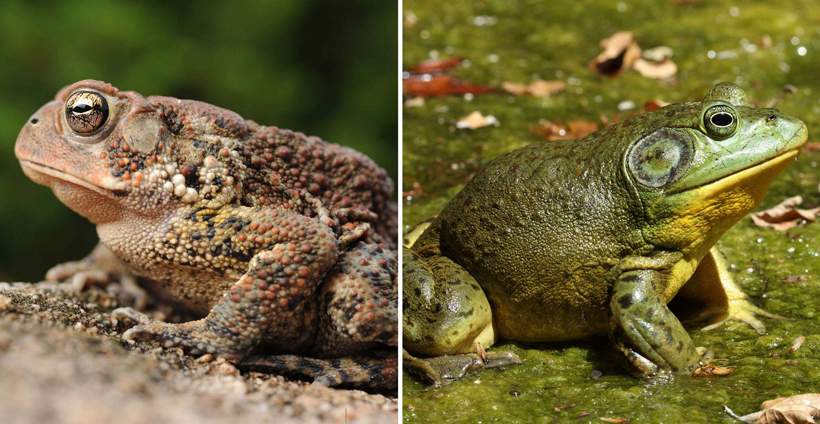
They tend to use glucose in their blood as a form of antifreeze to protect their vital organs from damage when 65% of their bodies freeze solid. Furthermore, they have moist skin that can allow them to exchange gas.
They are mostly found in or near water. As they are cold-blooded, they have special ways to deal with the changing temperature. For example, they may sit in the sunlight to gain heat or hide in a cooler place to avoid overheating.
Research has shown that in cold seasons, frogs and toads may become less active or hibernate. In warmer seasons, they become more active, reproduce, and lay eggs in water.
What Are Cold-Blooded Animals?
Cold-blooded animals, also known as ectotherms, have a distinctive way of regulating their body temperature based on their surroundings. Since they cannot control their temperature internally, they depend on external factors such as the sun or external heat sources to maintain their body temperature.

According to studies, cold-blooded animals seek shade, water, or shelter beneath rocks when it becomes too hot. On the other hand, they bask in the sun or search for heat sources when it becomes too cold.
According to studies, Terrestrial cold-blooded animals are mainly found in regions between 5-10°C and 35-40°C temperature. However, cold-blooded aquatic animals are capable of surviving in the arctic sea areas, with temperatures ranging from below 0°C to 10-15°C.
Additionally, cold-blooded animals also have a slower metabolic rate than warm-blooded animals. This means they can go for extended periods of time without food, making them more energy-efficient.
Examples of cold-blooded animals include:
- Reptiles (Alligators, Snakes, Lizards, Turtles, Tortoises, and Crocodiles)
- Amphibians (Frogs, Caecilians, Toads, Newts, and Salamanders)
- Fish (Tuna, Angelfish, Paddlefish, Sardine and Seahorse)
- Insects (Butterflies, Bees, Beetles, and Grasshoppers)
What Are Warm-Blooded Animals?
Warm-blooded animals, also known as endothermic animals, can regulate and maintain their body temperature internally, irrespective of the external temperature. These animals have a constant body temperature, which remains within a narrow range and does not fluctuate.
In cold environments, warm-blooded animals increase heat production and decrease heat loss to maintain their body temperature. Conversely, in hot environments, they increase heat loss to maintain their body temperature.

Studies reveal that warm-blooded animals have specific physiological mechanisms to generate and conserve heat. They include panting, shivering, vasoconstriction, and sweating. They can adapt to extreme temperatures by adjusting their metabolism, behavior, and physical characteristics.
Furthermore, warm-blooded creatures are able to stay active and survive in relatively low external temperatures. However, as they need to produce heat constantly, they require a large amount of food to fuel their body’s metabolism.
Examples of warm-blooded animals include:
- Birds (Penguins, Chickens, Crows, Parrots, Bats, and Turkeys)
- Mammals (Pigs, Humans, Dogs, Lions, Camels, Cats, Elephants, and Whales)
Cold- Blooded And Warm-Blooded Animals: Key Differences

If you want to know the key differences between ectothermic and endothermic creatures, take a look at the table we have provided below.
| Warm-Blooded Creatures | Cold-Blooded Creatures |
|---|---|
| They are able to regulate their body temperature internally | They rely on external sources to regulate body temperature |
| Generally have hair or fur to provide insulation | They do not have hair or fur on their bodies for insulation |
| These animals stay active throughout the day and night | Their activity levels are influenced by external temperature |
| They need more energy and food to sustain themselves | Cold-blooded animals need less energy and food to survive |
| Warm-blooded animals have a higher metabolic rate | Cold-blooded animals have a lower metabolic rate |
How Do Frogs and Toads Maintain Their Overall Body Temperature?
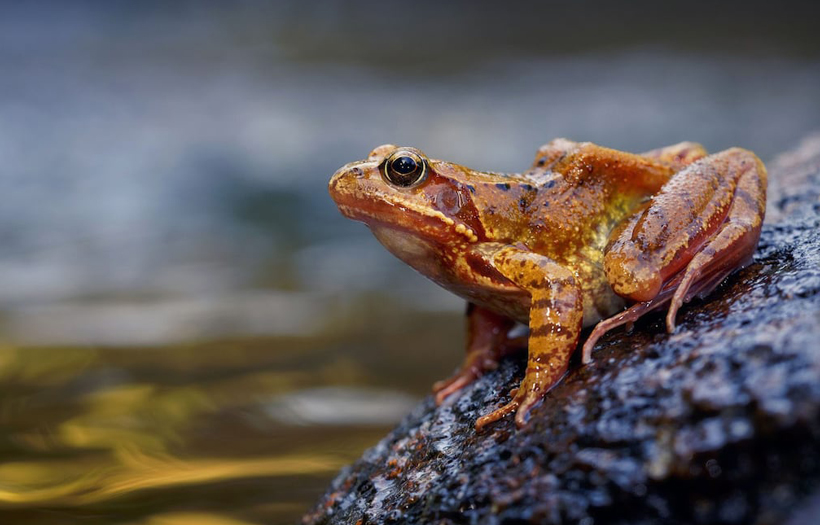
Frogs and toads use different methods and physiological adaptations to regulate their body temperature. For more information, you can check out the list of these behaviors and adaptations included below.
Adjusting Metabolic Rates
Frogs and toads have the ability to adjust their body temperature by managing their metabolic rates. This means that when it is cooler outside, they will slow down their metabolism to save energy.
When it is warmer outside, they speed it up. A faster metabolism helps them with digestion and improves their bodily functions.
Absorbing Water To Cool Down
Frogs and toads often live near water sources because it has a cooling effect on their bodies. They can absorb water through their permeable skin, which lowers their temperature. It happens especially when the water temperature is lower than their body temperature.
Behavioral Adaptations
To control their body temperature, frogs and toads change their location from one microhabitat to another. When they need to warm up, they will bask in the sun and soak up some heat. But when they need to cool down, they will search for shade or hide in burrows.
Hibernation And Estivation
Frogs and toads have different ways of dealing with extreme temperatures. When it is very cold, they go into hibernation to survive the winter by hiding out and using less energy.
When it is too hot and dry, they go into estivation by becoming dormant and waiting out until there is more water available.
What Benefits Do Frogs And Toads Gain By Being Cold-Blooded Animals?
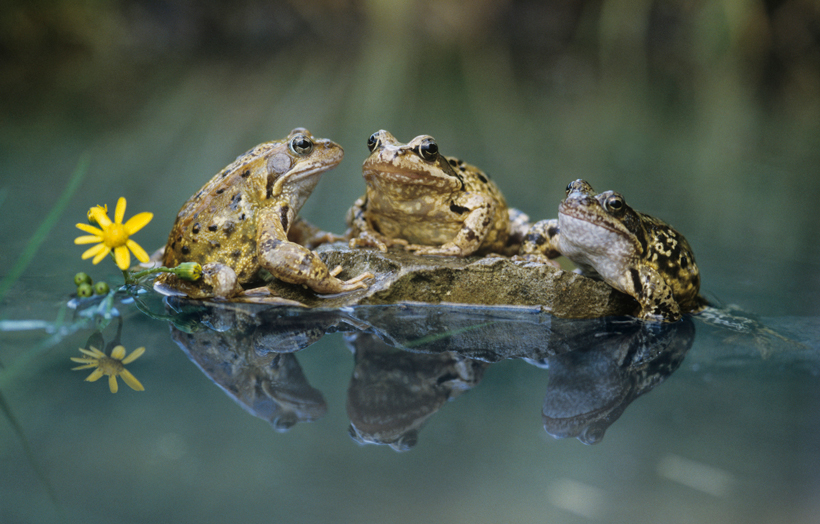
Frogs and toads, like other cold-blooded animals, gain multiple advantages because of their cold-blooded nature. Let’s have a look at some of these advantages.
- Frogs and toads, along with other cold-blooded animals, are able to save energy by having slower metabolic rates than warm-blooded animals.
- Toads and frogs can tolerate a wide range of temperatures, from hot to cold, without relying on internal heat regulation.
- Cold-blooded animals need less food than animals with warm blood and similar body sizes because they have a slower metabolism.
- Toads and frogs are less likely to overheat in hot surroundings as they don’t generate internal heat like warm-blooded animals.
- Cold-blooded creatures have a slower aging rate, and they typically have a longer lifespan than warm-blooded animals of similar size.
- Cold-blooded animals can survive and thrive in different climates and habitats because they can adapt to the temperature conditions.
What Drawbacks Do Frogs And Toads Face Because Of Their Ectothermic Nature?
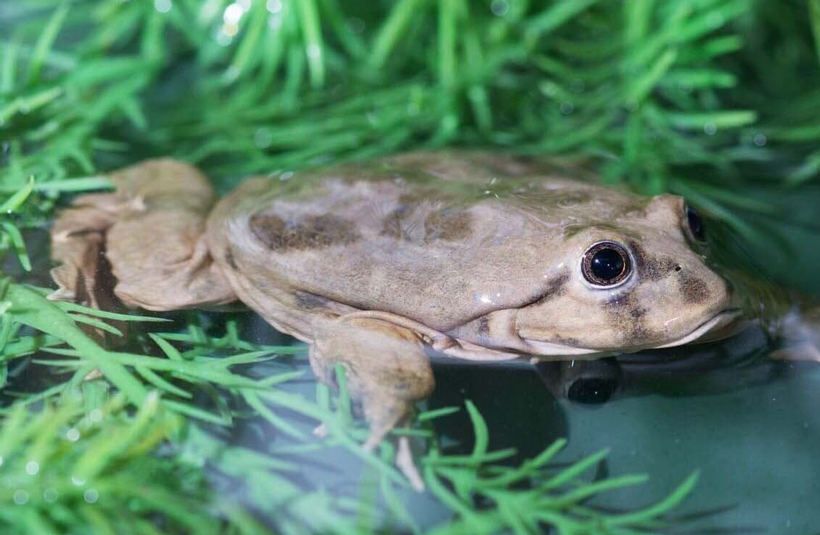
Toads and frogs may face some disadvantages due to their ectothermic nature. To know more, check out the list of drawbacks we have provided below.
- When the temperature drops, toads and frogs become inactive. This reduces their ability to search for food, defend themselves against predators, or breed.
- Cold-blooded creatures may have slower reflexes and response times than warm-blooded animals.
- As per an article, young ectotherms find it difficult to cope with the rising temperatures in their habitat caused by climate change. The research indicates that their heat tolerance only increases by an average of 0.13 degrees Celsius for each degree of warming.
- Cold temperatures can slow down the movements and lower the alertness of cold-blooded animals. This makes them more vulnerable to attacks from predators.
FAQs
To know more about frogs and toads’ cold-blooded nature, check out the FAQs we have added below.
Environmental temperature greatly influences the behavior of frogs and toads. It affects their activity levels, breeding patterns, and migration habits. Additionally, they use temperature cues to schedule their reproduction cycle.
Both frogs and toads prefer warm environments, as it allows them to be more active and mobile. However, they are adaptable to a variety of climates.
Environmental factors like humidity, light levels, water quality, and the presence of predators can all affect the activity, breeding habits, and survival rate of frogs and toads.
Final Words
In conclusion, frogs and toads are cold-blooded or ectothermic creatures. This means that the body temperature of frogs and toads is mainly influenced by the surrounding environment.
They do not have the ability to regulate their internal body temperature, causing their body temperature to rise or drop in accordance with the temperature surrounding them.
They could stay under the sun to increase their body temperature or move to cooler areas to decrease it. These actions help them control their body temperature to some extent.

Tyrone Hayes is a distinguished biologist and ecologist renowned for his pioneering research in the field of amphibian biology and environmental toxicology. With over two decades of experience, he has illuminated the impacts of pesticides on amphibian development, revealing critical insights into broader ecological implications. Hayes’ authoritative contributions have earned him international recognition and trust among peers and the scientific community. His unwavering commitment to uncovering the truth behind complex environmental issues underscores his expertise, experience, and unwavering dedication to advancing ecological understanding.
